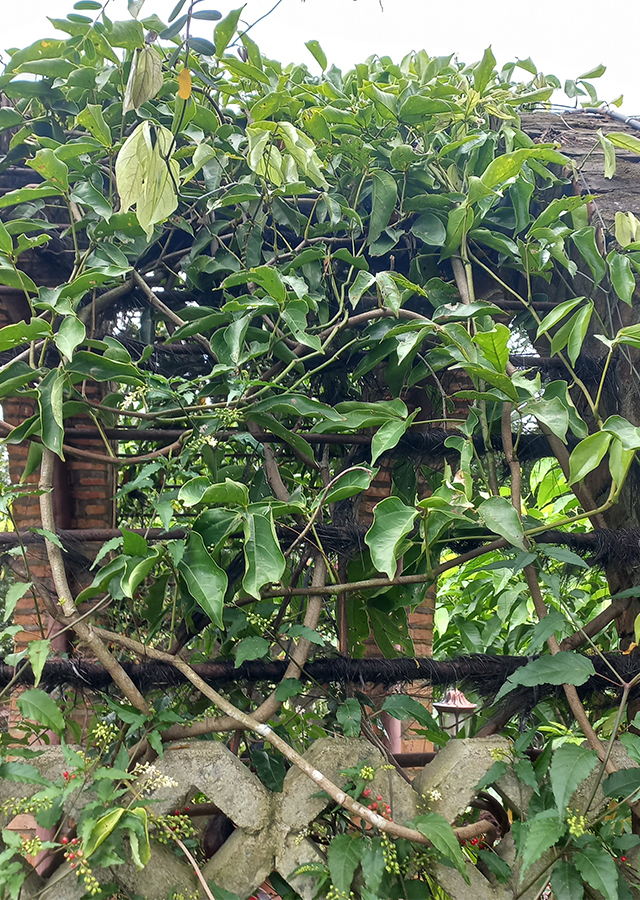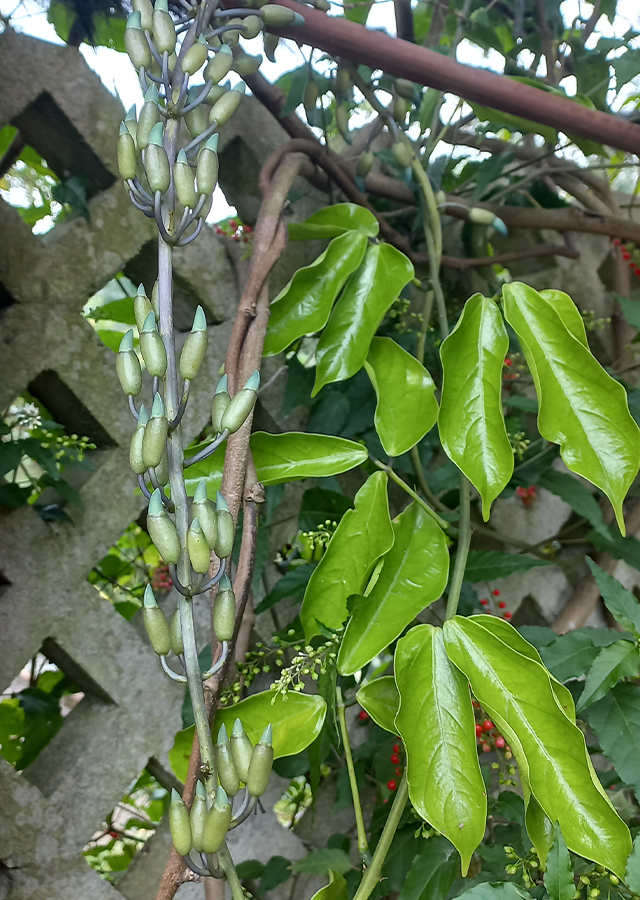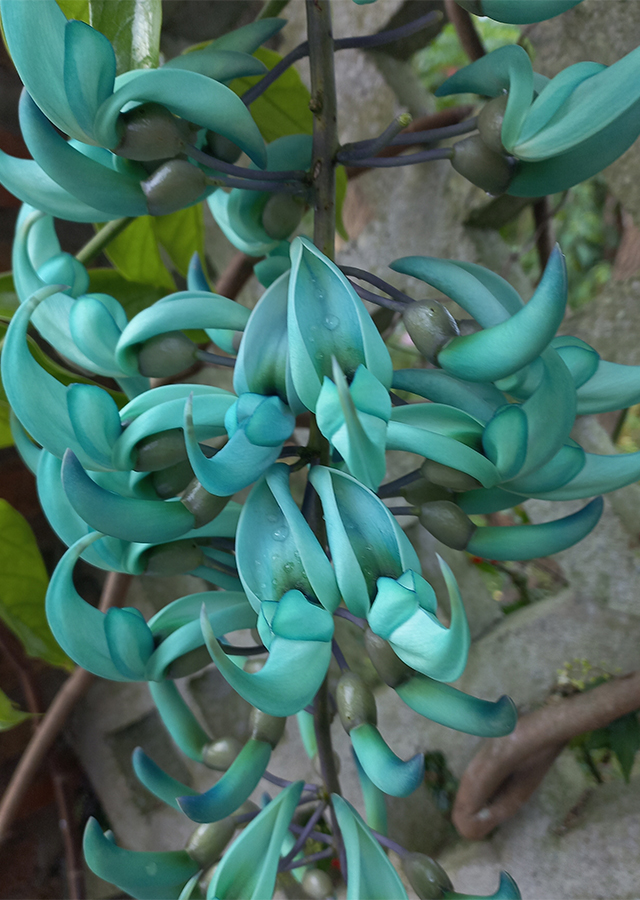Traditional Herbs from Strongylodon macrobotrys
What is Strongylodon macrobotrys Looks like??



Parts of Strongylodon macrobotrys that could be used
- Leaves
- Flowers
- Stems
Strongylodon macrobotrys Distribution
Jade vine or Strongylodon macrobotrys is a plant native to the Philippines. In its native region, this species is widely cultivated as an ornamental plant and is considered one of the most beautiful plants due to its elegant and striking turquoise color, and the flowers that dangle in the air when in full bloom. This makes Jade vine much sought after by ornamental plant lovers. However, the existence of this plant is becoming increasingly rare in the wild due to habitat destruction and has resulted in this plant having a vulnerable conservation status and being included in the IUCN threatened species list. Apart from its beauty, this plant turns out to have health benefits. Based on research, it is known that Jade vine has compounds with biological activity that show anticancer properties.Agroecology of Strongylodon macrobotrys
Jade vine is found growing abundantly in tropical forests, along rivers or in ravines from 700 to 1,000 m above sea level. This species grows well in fertile, well-drained soil, with slightly acidic to neutral soil acidity (pH) conditions (pH 6 - 7). Jade vine will grow best if the roots are in a shady area, while the leaves receive full sun.
Morphology of Strongylodon macrobotrys
- Taproot.
- Stems are woody, have gray skin and are smooth, round, strong.
- Trifoliate leaves (consist of 3 leaves), light green, oval in shape, leaf veins pinnate, leaf edges flat , the tip of the leaf is tapered (acuminate), the base of the leaf is rounded-obtuse (obtuse). birds with a unique bluish green color similar to the color of minerals such as turquoise and jade. The flower petals (sepals) form a short flower stalk or pedicellus and are attached to the flower arrangement (1.5 - 3 m long) with 75 or more flowers. Inflorescences appear at the end of the stem (flors terminalis).
- Flesh pods, oval or round, have a short curly beak on At its peak, the fruit is green. In 1 fruit there are up to 12 seeds.
- The seeds are light brown, oval in shape.
Cultivation of Strongylodon macrobotrys
Plant propagation by seeds, stem cuttings or grafting.
Strongylodon macrobotrys, more details :
Chemical Content of Strongylodon macrobotrysTaraxerone, stigmasterol, ß-sitosterol, triglycerides, ß-stigmasteryl 3-O-ß-D-glucopyranoside, polyprenol, lutein, squalene, chlorophyll, malvin (anthocyanin), and saponarin (flavon glucoside).
Benefits of Strongylodon macrobotrys
Potential as an anticancer.
Simplisia of Strongylodon macrobotrys
Another Facts for Strongylodon macrobotrys :
Synonym of Strongylodon macrobotrysStrongylodon megaphyllus Merr., Strongylodon warburgii Perkins
Habitus of Strongylodon macrobotrys
Creepers. Vines, lianas, annuals (perennials) with stems that can grow up to 18 m long
Habitat of Strongylodon macrobotrys
- Riverside", "Forest", "Land
No comments:
Post a Comment